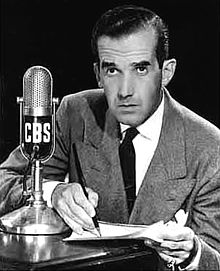
United Press International (UPI) is an American international news agency whose newswires, photo, news film, and audio services provided news material to thousands of newspapers, magazines, radio and television stations for most of the 20th century until its eventual decline beginning in the early 1980s. At its peak, it had more than 6,000 media subscribers. Since the first of several sales and staff cutbacks in 1982, and the 1999 sale of its broadcast client list to its main U.S. rival, the Associated Press, UPI has concentrated on smaller information-market niches.
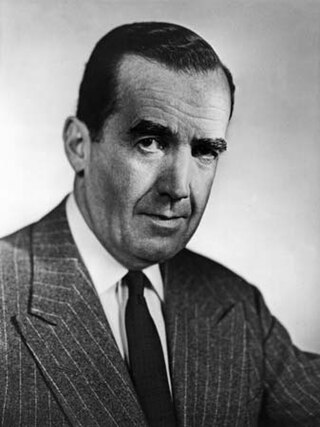
Edward Roscoe Murrow was an American broadcast journalist and war correspondent. He first gained prominence during World War II with a series of live radio broadcasts from Europe for the news division of CBS. During the war he recruited and worked closely with a team of war correspondents who came to be known as the Murrow Boys.

Arnold Eric Sevareid was an American author and CBS news journalist from 1939 to 1977. He was one of a group of elite war correspondents who were hired by CBS newsman Edward R. Murrow and nicknamed "Murrow's Boys." Sevareid was the first to report the Fall of Paris in 1940, when the city was captured by German forces during World War II.
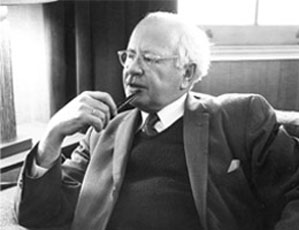
William Lawrence Shirer was an American journalist, war correspondent, and historian. His The Rise and Fall of the Third Reich, a history of Nazi Germany, has been read by many and cited in scholarly works for more than 60 years; its fiftieth anniversary was marked by a new edition of the book.
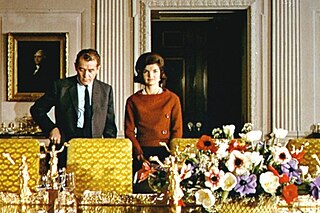
Charles Collingwood was an American journalist and war correspondent. He was an early member of Edward R. Murrow's group of foreign correspondents that was known as the "Murrow Boys". During World War II, he covered Europe and North Africa for CBS News. Collingwood was also among the early ranks of television journalists who included Walter Cronkite, Eric Sevareid, and Murrow himself.

Robert Trout was an American broadcast news reporter who worked on radio before and during World War II for CBS News. He was regarded by some as the "Iron Man of Radio" for his ability to ad lib while on the air, as well as for his stamina, composure, and elocution.
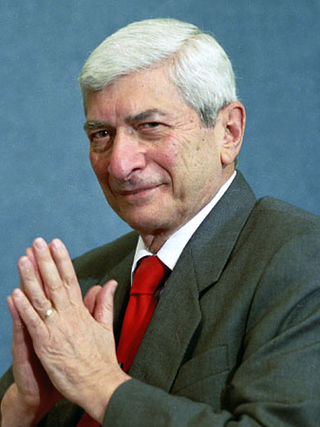
Marvin Leonard Kalb is an American journalist. He was the founding director of the Shorenstein Center on Media, Politics and Public Policy and Edward R. Murrow Professor of Press and Public Policy from 1987 to 1999. The Shorenstein Center and the Kennedy School are part of Harvard University. Kalb is currently a James Clark Welling Fellow at George Washington University and a member of the Atlantic Community Advisory Board.

Cecil Brown was an American journalist and war correspondent who worked closely with Edward R. Murrow during World War II. He was the author of the book Suez to Singapore, which describes the sinking of HMS Repulse in December 1941. He also has a star on the Hollywood Walk of Fame for his contribution to radio.
Laurence Edward LeSueur was an American journalist and a war correspondent during World War II. He worked closely with Edward R. Murrow and was one of the original Murrow Boys.
Richard Curt Hottelet was an American broadcast journalist for the latter half of the twentieth century.

Winston Burdett was an American broadcast journalist and correspondent for the CBS Radio Network during World War II and later for CBS television news. During the war he became a member of Edward R. Murrow's team of war correspondents known as the Murrow Boys. From 1937 to 1942 Burdett was involved with the Communist Party. He testified before the Senate Internal Security Subcommittee in 1955, detailing his espionage work for the Soviet Union in Europe and naming dozens of other party members.
Ned Calmer was a Chicago-born American journalist and writer. He was a long-time CBS News analyst and close associate of Edward R. Murrow.
The CBS World News Roundup is the longest-running network radio newscast in the United States. It airs weekday mornings and evenings on the CBS Radio Network.

William Randall Downs, Jr. was an American broadcast journalist and war correspondent. He worked for CBS News from 1942 to 1962 and for ABC News beginning in 1963. He was one of the original members of the team of war correspondents known as the Murrow Boys.
Thomas Grandin was an American broadcast journalist during World War II. He was an original member of a team of reporters and war correspondents known as the Murrow Boys.
Elizabeth Wason was an American writer and broadcast journalist; a pioneer, with such others as Mary Marvin Breckinridge and Sigrid Schultz, of female journalism in the United States. She worked for and with Edward R. Murrow during World War II, although despite her significant contributions she, along with a handful of other journalists closely associated with Murrow, were rarely recognized in the famed group of war correspondents known as the Murrow Boys. She also wrote numerous books on food and cooking from the 1940s through 1981.

Paul Welrose White was an American journalist and news director who founded the Columbia Broadcasting System's news division in 1933 and directed it for 13 years. His leadership spanned World War II and earned a 1945 Peabody Award for CBS Radio. After his departure from CBS in 1946 he wrote a textbook on broadcast journalism, News on the Air (1947). Since 1956 the Radio Television Digital News Association has presented the Paul White Award for lifetime achievement as its highest honor.

John Hart is a retired American television journalist who worked for several different television networks during the 1960s through the 1990s.
